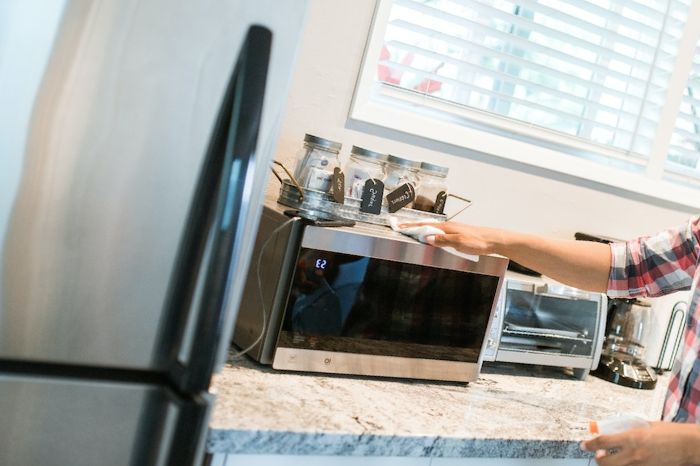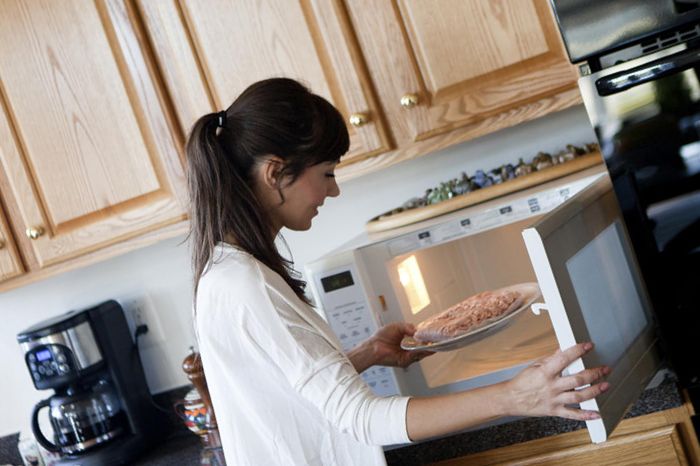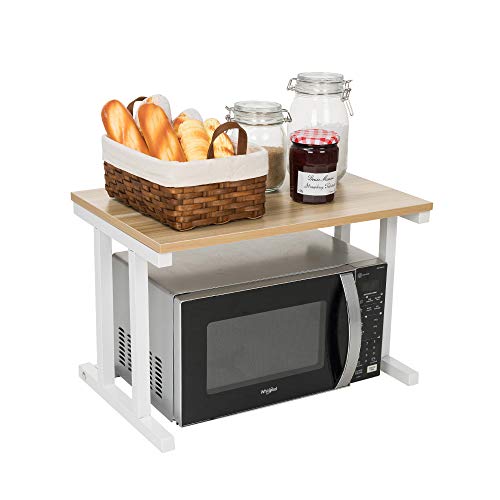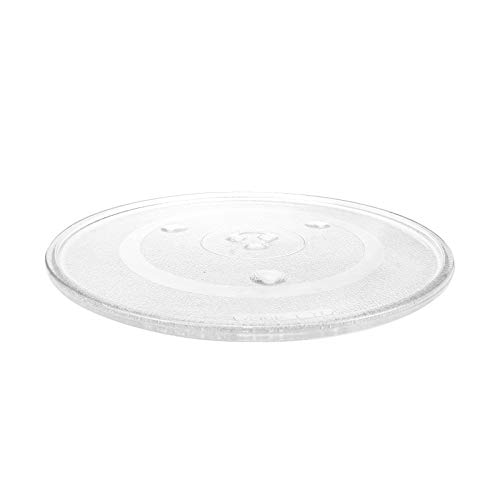Is It Safe To Clean The Microwave With Water?
Microwave ovens have become an essential appliance in most modern kitchens across the world. This electronic device is used to cook, heat, and defrost food items in a matter of seconds. However, just like any other appliance, microwaves require regular cleaning to ensure they function correctly and maintain their hygiene standards.
Many people are unsure about the best way to clean their microwave when it comes to effectively removing food stains, grease, and other residues. One of the most commonly asked questions in this regard is whether is it safe to clean the microwave with water. In this article, we will explore the different ways to clean a microwave safely and effectively and understand the risks of using water or other liquids.
What is the best way to clean a microwave safely and effectively?
A microwave is an essential appliance in most households that gets used daily. Over time, food particles and spills can accumulate inside the microwave, leading to unpleasant smells and unsanitary conditions. Therefore, it is crucial to clean it regularly, but how can you do so safely and effectively?
One of the best and safest ways to clean the microwave is by using natural ingredients found within your home. For example, a mixture of water and vinegar is an excellent solution that can effectively clean and sanitize the interior of your microwave. Simply take a microwave-safe bowl, add equal parts of water and vinegar, and microwave it for about five minutes. This method will help loosen tough stains and eliminate any lingering odors.
After microwaving the water and vinegar mixture, let the bowl sit in the microwave for a few minutes to cool down. Then, using a clean cloth or sponge, wipe away any dirt or stains. For stubborn stains, you may want to use a little elbow grease, but as always, be cautious not to use any abrasive materials that could damage the microwave’s interior.
Another alternative to the water and vinegar mixture is using a solution of lemon and water. You can slice a lemon in half, squeeze the juices, and add water to the bowl. Microwave the solution for a few minutes to loosen the dirt and grime inside your microwave. The acidic properties of the lemon work wonders to cut through grease and food stains while leaving behind a refreshing citrus scent.
Remember, always clean the microwave regularly and avoid using harsh chemicals or abrasive materials, as they can scratch the interior and cause damage. Additionally, be cautious when cleaning the door and seal, as these are delicate components that must not be damaged.
Keeping your microwave clean is essential to ensure optimal performance as well as a sanitary environment. By following these simple steps, you can safely and effectively clean your microwave while using natural and readily available household items.
What are the risks of using water or other liquids to clean a microwave?
When cleaning a microwave, it is common to use water or other liquid substances like vinegar or lemon juice to aid in removing grime and stains. However, the use of liquids to clean a microwave poses a number of risks and can lead to dangerous consequences.
One risk of using water or other liquids to clean a microwave is the potential for electrical shock. Microwaves are powered by electricity and using liquids can increase the likelihood of electrical shock, especially if the liquid comes into contact with electrical components or wiring.
Another risk of using liquids to clean a microwave is the potential for damage to the appliance. Water, vinegar, and other liquids can seep in through the vents or other openings in the microwave, causing damage to the internal components and potentially rendering the microwave unusable. The moisture can corrode the circuit boards and cause damage to electronic components.
Furthermore, using liquids to clean a microwave can create a fire hazard. If the liquid is left to heat up and evaporate while in the microwave, it can ignite a fire, especially if the liquid is flammable.
Lastly, using liquids to clean a microwave can lead to the spread of harmful bacteria. If the liquid is not properly diluted or cleaned up, the bacteria can linger in the microwave and contaminate the food that is subsequently cooked. This can cause foodborne illnesses and lead to health complications.
While it may seem convenient to use water or other liquids to clean a microwave, it is important to be aware of the potential risks and take proper precautions to avoid electrical shock, appliance damage, fire hazards, and the spread of harmful bacteria. Instead, consider using microwave-safe cleaning products or relying on a professional cleaning service.
Are There Any Alternatives To Using Water For Microwave Cleaning?
If you’re uncomfortable using water or other liquids to clean your microwave, there are other alternatives you can try. Here are a few options:
Use a Steam Cleaner
A steam cleaner is an efficient and safe way to clean your microwave. Steam cleaners help to loosen dirt and grime, making it easy to wipe it away with a clean cloth. You can buy a steam cleaner or rent one from a hardware store.
Use Baking Soda and Lemon
Baking soda and lemon are two natural cleaning agents that can help you clean your microwave without using water. Cut a lemon in half and place it in a microwave-safe bowl. Add a teaspoon of baking soda to the bowl, and microwave it for two minutes. After two minutes, remove the bowl, and use a clean cloth to wipe the interior of the microwave. The grime should come off easily, leaving you with a clean and fresh-smelling appliance.
Conclusion
Overall, it depends on the size of the mess you are trying to clean and how deep the mess is. If it is a minor mess, such as some splattered food, then using a damp cloth or sponge with warm water is probably enough to get most of the grime off. But if you have something larger and deeper that needs to be cleaned, then using cleaning products may be necessary to ensure everything is thoroughly removed.
Ultimately, when determining whether or not it’s safe to clean your microwave with water, make sure you assess the size and severity of your mess before making any decisions. Cleaning with a mixture of vinegar and water may also serve as a good degreaser for tough spots in the microwave or even outside its walls. The key takeaway from this article is that cleaning small inconveniences without chemicals may be possible but remember bigger tasks could often benefit from further assistance!




